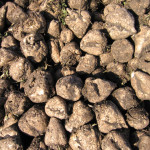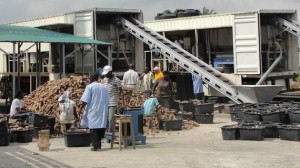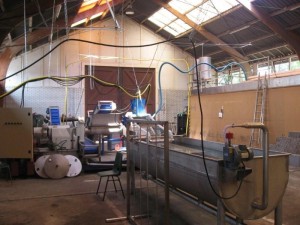‘The biobased economy is based on another logic than the existing economy,’ says Johan Sanders. ‘And many problems in the transition to a biobased economy arise from the fact that people find it hard to think according to that new logic. In the first place, we should counteract inefficiency in many forms. That will lead us to a circular economy. But we should reduce as much as possible the circles of sales, use, reuse and recycling, and in so doing save as much energy and capital in reuse as possible. Many biorefinery projects do not seem cost effective in the old logic, but in the new logic they make perfect sense.’

Counteract inefficiency
Johan Sanders is a professor in ‘biobased commodity chemicals’ at Wageningen UR. As such, he develops ways of processing the agricultural yield that carry the highest revenue. The promise of a better income to the farmer in the biobased economy is substantiated in his professoriate.
Why a circular economy? ‘Our social and economic system hosts inefficiency in many forms. This process starts on the land. More often than not, the goal of agricultural production is recovery of one sole product, usually food. The remainder of the yield we regard as waste. But we can recover many useful products from waste. So this causes inefficiency.’

A major logistic operation
‘Take the example of sugar beet. In the Netherlands, we have just two factories left, with a production as large as that of tens of factories one hundred years ago; we ship the beet (75% water) across great distances, together with lumps of soil. The production process has been optimized for sugar production. But the factory will have to get rid of the remaining soil, and of the mineral components in the beet which will show up in the waste streams of the process. Minerals end up in the most important side product: the molasses, which still contain much sugar as well. Molasses are the feedstock for ethanol or yeast production. These processes’ waste water still contains the minerals, in a low concentration. To concentrate them requires a major capital investment, for a process that uses much energy. A common ethanol or yeast factory will easily assemble onsite an amount of potassium which can fertilize 50 000 hectares of agricultural land. It requires a major logistical operation to deliver even this concentrated amount to the land. It would seem to be a good example of a circular economy: minerals finally end up on the land. But because the circle is so wide and the minerals end up in such a dilute form, we waste capital and energy in this process. In the Netherlands, there is no way around having to make these costs. In Brazil, at the major ethanol factories, they return the minerals to the adjacent land which therefore are heavily overfertilized.’

‘But scientists from Wageningen UR have developed a process for production of a storable intermediate sugar product from 500 hectares of beet. They process the remaining sugars, again at a small scale, to produce ethanol. Now the minerals which remain in low concentrations as a side product after ethanol production, do not need concentration and purification, as these 500 ha are just 1-2 km away from the little factory; and the farmer can easily drive this distance on his tractor. Moreover, the farmer can offer for sale his intermediary product at any time of the year to the central factory, which would allow the latter to operate all year round (instead of just a few months).’
Better decentralized than centralized
‘A few things are essential to this example. For a sound business case one needs to process only substances that are useful, right at the beginning of the value chain; a good example of the importance of small circles in the circular economy. This also prevents problems with heavy metals contained in the soil, which arrive at the central factory in residual soil. Furthermore, we introduce an intermediate level of processing between farmer and central factory, without doing away with the latter; this reinforces the position of rural economy in the economy as a whole. As technology progresses, many new activities can be coupled to this intermediary level. For instance, farmers in a cooperative might process beet leaves (40% of biomass), and produce proteins and fibres from them, in the same process that we develop for grass refinery. Processes which can all better be performed in a decentralized than in a centralized way.’

Reducing the circle
We discussed grass refinery earlier on this site. An important motive for grass refinery is that grass contains too much proteins for the cow (of a quality too high for the animal as well). This excess of proteins ends up as a nitrogen fraction in the manure; it causes unnecessary emissions of ammonia and greenhouse gases. On the basis of grass refinery the cow is better fed, whereas we liberate proteins for other animal feed (pigs, chickens) and reduce the manure problem at the same time.
‘Grass refinery, too, requires small circles in the circular economy. In the biobased economy, keeping intact soil fertility is of the essence. Direct return of minerals to the land in liquid form, i.e. without the need for minerals concentration and for logistical operations, saves much energy and capital. In practice, this is only successful if the yield is pre-treated at a site near the land, at a distance of a few kilometres at most. In Grassa, we develop a mobile installation to this end. In this way, biorefinery is the cornerstone of a new economy, with rural areas as its focal point. But on the other hand, biorefinery can only develop if we can think in a new logic, directed towards counteracting inefficiency and the maximum use of local feedstock.’
